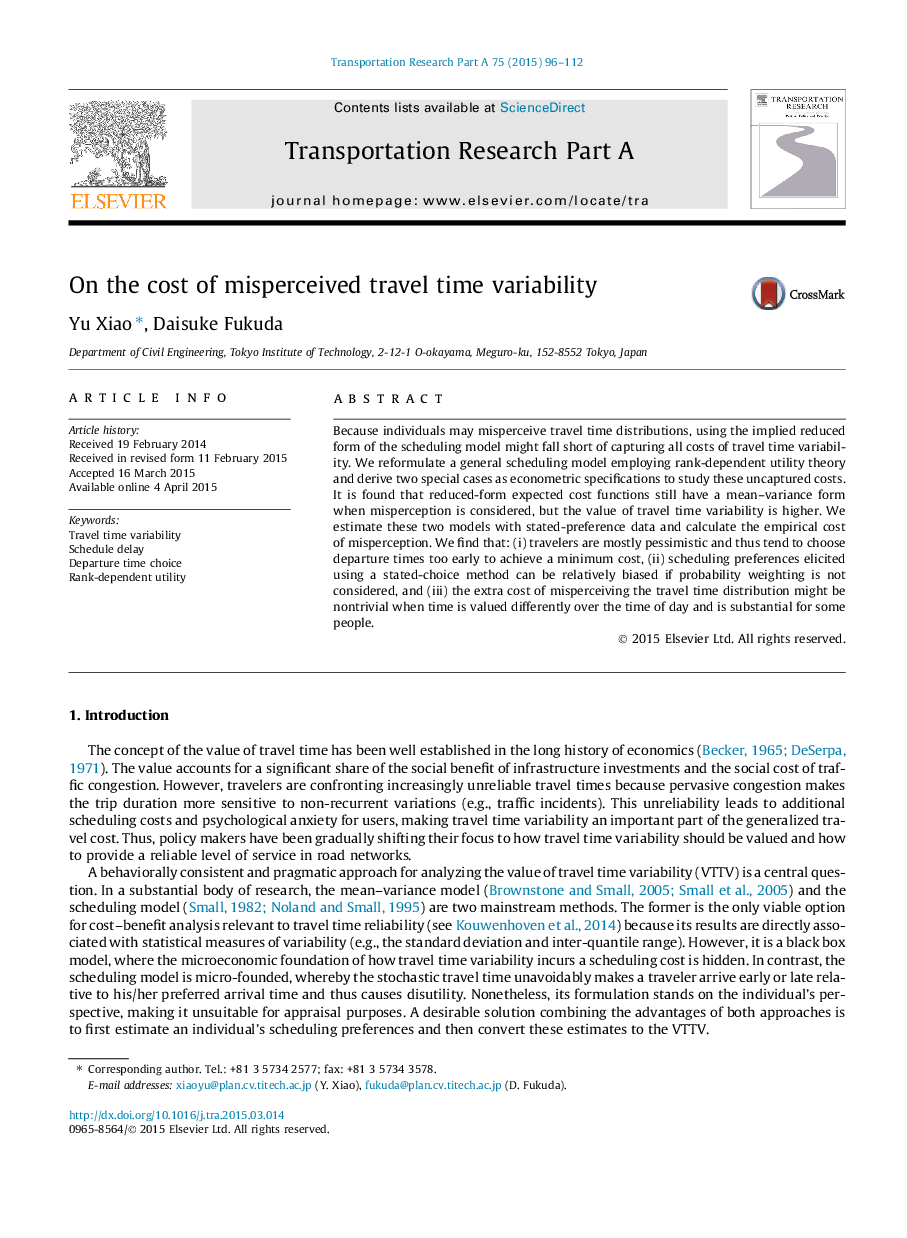| Article ID | Journal | Published Year | Pages | File Type |
|---|---|---|---|---|
| 310437 | Transportation Research Part A: Policy and Practice | 2015 | 17 Pages |
•Probability misperception makes travelers choose suboptimal departure times.•We estimate the effects of misperception on the value of travel time variability.•The cost of misperception ranges from 1% to 8%.•Closed-form expressions are provided for calibrating value of travel time variability.
Because individuals may misperceive travel time distributions, using the implied reduced form of the scheduling model might fall short of capturing all costs of travel time variability. We reformulate a general scheduling model employing rank-dependent utility theory and derive two special cases as econometric specifications to study these uncaptured costs. It is found that reduced-form expected cost functions still have a mean–variance form when misperception is considered, but the value of travel time variability is higher. We estimate these two models with stated-preference data and calculate the empirical cost of misperception. We find that: (i) travelers are mostly pessimistic and thus tend to choose departure times too early to achieve a minimum cost, (ii) scheduling preferences elicited using a stated-choice method can be relatively biased if probability weighting is not considered, and (iii) the extra cost of misperceiving the travel time distribution might be nontrivial when time is valued differently over the time of day and is substantial for some people.
